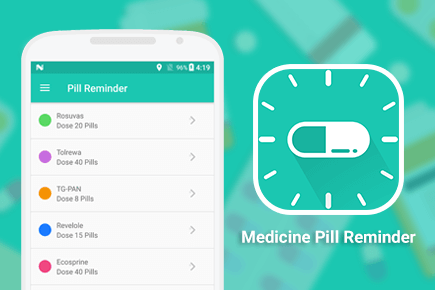

However, these apps may prove most beneficial for patients with complex medication regimens or for caregivers of others or family members.

A smartphone medication adherence–oriented app (adherence apps) can potentially consolidate all of the user’s medication-specific information and thereby provide a more streamlined process to educate the individual about his/her disease or care.Īdherence apps can be downloaded for little to no cost, and their benefits may be realized by anyone taking prescription medications. Using a smartphone app is a novel approach to improving adherence and patient behavior it is constantly accessible, involves and educates the patient, and provides a repository for patient- and medication-specific information.
#Pill reminder by drugs.com download
Most tasks are performed by specialized applications (apps) that consumers can easily download and use to assist them in a variety of functions. Smartphones are Internet-ready multipurpose devices that allow constant access to communication and information and perform many tasks.

10– 13 Nonetheless, despite their limitations, all of these methods are adequate for documenting nonadherence, but in general, only self-report methods can distinguish among the various types of nonadherence described below. Although the process of cap removal does not necessarily reflect dose ingestion, medication electronic monitoring systems are useful for calculating adherence rates for dose taking and dose timing and often are viewed as the best method to measure adherence. Refill rates or electronic monitoring cannot determine whether patients actually take the medication. 4 Biological monitoring (e.g., sampling blood, urine) is either impractical, invasive, or intrusive and does not measure adherence unless the time and dose administered before sampling are verified. 7 Pill counts are unreliable if patients fail to return bottles or dump pills before the count. 6, 8, 9 Patient self-reports rely on memory and are prone to inaccuracies and recall bias. Methods to measure adherence, including patient self-reports, pill counts, refill rates, biological monitoring, and electronic monitoring, have limitations and are only proxy measures. 5 Adherence monitoring should be performed routinely to ensure therapeutic efficacy, avoid unnecessary dose and regimen changes, contain health care costs, and in certain cases, prevent resistance to therapy from emerging. 4 Irrespective of disease, medication complexity, or how adherence is measured, the average adherence rate to chronic medication therapy is approximately 50%. Poor adherence causes approximately 33% to 69% of medication-related hospitalizations and accounts for $100 billion in annual health care costs. 2, 3 Medication nonadherence remains a common health care problem. According to the International Society for Pharmacoeconomics and Outcome Research (ISPOR), adherence is “the extent to which a patient acts in accordance with the prescribed interval, and dose of a dosing regimen.” 1 Medication nonadherence can affect patient health adversely, negatively impact a patient’s relationship with his/her care provider, skew results of clinical therapy trials, and increase health resource consumption.


 0 kommentar(er)
0 kommentar(er)
